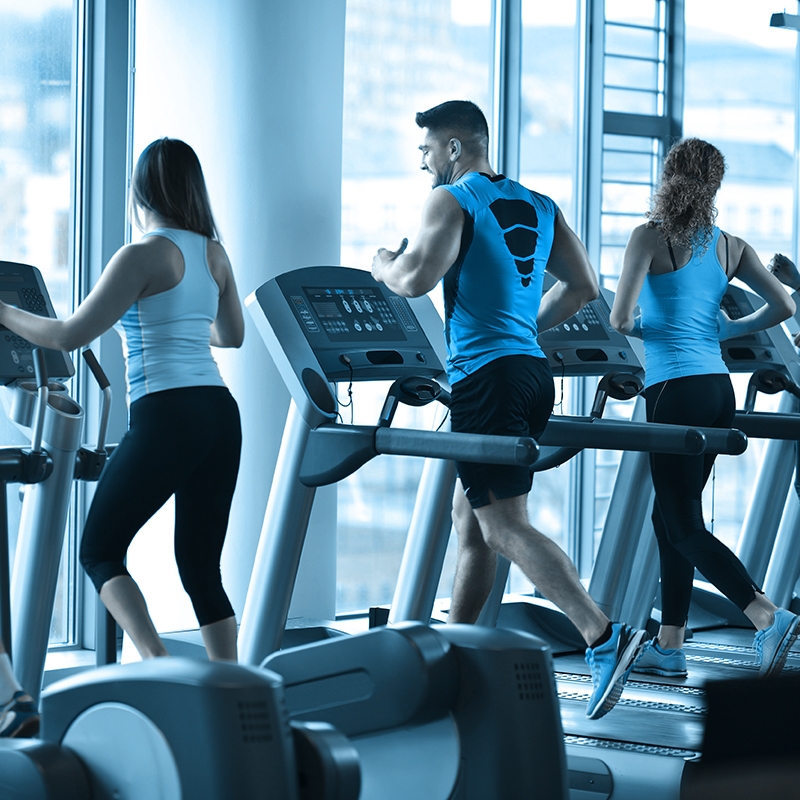Post Workout Thigh Pain: Prevention and Management
Did you know that regardless of your fitness level, you can still feel sore a day or two after working out? This is especially true if you started a new activity or you exerted more effort and pushed yourself harder in one of your recent routines. Formally known as delayed onset muscle soreness, or DOMS, this type of pain and discomfort following a workout is not necessarily an indicator that you did your workout wrong.
No Pain, No Gain
Delayed onset muscle soreness often occurs when you suddenly changed your routine and increased the duration and intensity of your workout. When you put your body through physical stress, your muscle fibers actually develop micro-trauma that results in soreness and stiffness.
Adding more weight when doing squats or when doing deadlifts, for instance, can lead to thigh pain after a workout as small, microscopic tears appear on the thigh muscles accompanied by some inflammation.
The muscle soreness, which is usually minor, lasts for 3 to 5 days and occurs 1 to 2 days post-workout; after which you’ll feel good as new and ready to workout again. To put it simply, the soreness is just an indication that your body is adapting to your workout program.
Is it DOMS or Worse?
Just because it’s been emphasized that sore thigh muscles after working out are normal doesn’t mean that you should ignore it altogether. If the soreness in your thighs lasts beyond 5 days, it can mean that you’ve overtrained yourself or you’ve developed a more serious injury.
It’s important to identify immediately whether you are having DOMS or something more serious. You should be wary if the soreness involves some tingling, a localized stinging, and a stabbing or sharp pain, since these symptoms may indicate a more serious injury. If your thigh pain is accompanied by these signs or if it lasts longer than five days, consult your doctor right away.
Managing DOMS
As mentioned previously, the only time you need to be concerned about DOMS is if the soreness lasts beyond five days. Otherwise, the soreness is normal and will not require medical interventions. If the soreness is getting in the way of your daily routine, however, here are some management tips to keep in mind:
– There is no single way to treat DOMS. Unlike other forms of injuries where specific treatments work, DOMS may be eased or relieved using a combination of painkillers, massage, rest, and ice packs.
– Taking non-steroidal anti-inflammatory drugs (NSAIDs) like ibuprofen may also work to minimize the swelling and the pain.
– Consult your doctor first before taking painkillers to avoid any adverse reactions.
– Soak yourself in a hot tub to soothe your sore muscles.
– Get a massage to relax your tense muscles.
Another way to manage DOMS is by doing light exercises. While waiting for your thigh muscles to recover, you can still resume your fitness routine by working on a different muscle group, like your core and arm muscles, and doing low-intensity physical activities such as swimming and yoga for the meantime.
Preventing DOMS
Although muscle soreness can be expected after a workout, there are certain measures you can do to mitigate your discomfort:
– Increase the duration and the intensity of your exercise gradually to give your body enough time to adjust to changes without risking an injury.
– Perform a thorough warm-up and stretching exercise to increase the circulation to your muscles and to prepare them for your actual workout. You can also perform easy and light cardio exercises for about 5 to 10 minutes or until you start sweating lightly.
– Wear comfortable clothes and shoes. Your clothes and footwear can affect your performance during the workout as well as your post-workout experience. Wearing ill-fitting and worn-out shoes can actually affect the weight distribution in your lower extremities, increasing your risk of body aches.
– Use personal protective equipment like thigh compression sleeves that can improve efficiency with better circulation, provide support to thigh muscles, and help your body recover faster from a high-intensity workout.
– Drink enough fluids. Doing exercise makes you lose a lot of fluids. Since your muscles are made up of 79% water, you need to replenish the fluids you lose when you sweat and breathe. Dehydrated muscle fibers are also less elastic and are more prone to tearing.
– Incorporate protein and vitamin C into your diet because these nutrients are key ingredients in tissue building, wound healing, and tissue repair.
Post-workout, you need to cool yourself down by doing cardio exercises and some light stretches for about 5 to 10 minutes. Focus on the muscle groups you have just spent a couple of hours working on. By stretching the muscles post-workout, you’ll be increasing blood flow to the area once again, thereby helping your body flush out toxins and repair damage.
Delayed onset muscle soreness is not the endgame. You can easily treat, manage, and prevent it as long as you understand why it occurs in the first place.

